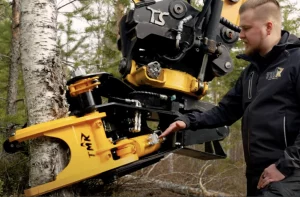Welcome to our discussion on maintenance tips for hydraulic shears and the art of dining. In this article, we will explore the world of hydraulic shear maintenance and how it can contribute to the efficiency and longevity of your equipment. But that’s not all – we will also take a deep dive into the realm of restaurant interior design, specifically focusing on exclusive fabric and steel creations that can transform your dining space into a captivating and functional environment.
Whether you’re looking to enhance the performance of your hydraulic shears or seeking inspiration for your restaurant’s interior, this article is packed with valuable insights that will leave you eager to discover more.
So, let’s embark on our journey into the world of hydraulic shear maintenance and the art of dining.
Key Takeaways
- Regular maintenance and lubrication are crucial for optimal performance and longevity of hydraulic shears.
- Neglecting maintenance can result in decreased efficiency and costly repairs.
- Inspecting and addressing potential issues before they become major problems is essential.
- Proper blade inspection, alignment, and storage, as well as hydraulic system maintenance, are important for the shears’ functionality.
Importance of Regular Maintenance
Hydraulic shears are essential tools used in various industries such as manufacturing, construction, and metalworking. These shears are designed to cut through different materials with precision and efficiency. However, like any mechanical equipment, hydraulic shears require regular maintenance to ensure their optimal performance and longevity.
Regular maintenance of hydraulic shears helps to prevent potential breakdowns and costly repairs. By conducting routine inspections, technicians can identify any signs of wear and tear, leaks, or loose components. Addressing these issues promptly can prevent further damage and extend the lifespan of the shears.
Furthermore, regular maintenance ensures that the hydraulic system operates smoothly. Hydraulic shears rely on hydraulic fluid to generate the necessary force for cutting. Over time, contaminants such as dirt, debris, or moisture can accumulate in the hydraulic system, leading to reduced efficiency and potential damage. Regular maintenance includes changing the hydraulic fluid, cleaning the filters, and inspecting the hydraulic hoses to prevent any clogs or leaks.
Common Maintenance Challenges
After understanding the importance of regular maintenance for hydraulic shears, it is crucial to be aware of the common maintenance challenges that may arise. Hydraulic shears are powerful machines that require proper care and attention to ensure optimal performance and longevity.
One common challenge that operators may face is the accumulation of debris in the shear blades. Over time, materials such as dirt, metal shavings, and other particles can build up on the blades, causing them to become dull and less effective. Regular cleaning and inspection of the blades is essential to prevent this issue.
Another common challenge is hydraulic fluid leakage. Hydraulic shears rely on hydraulic fluid to generate the necessary force for cutting. If there is a leak in the hydraulic system, it can lead to a loss of pressure and reduced performance. Operators should regularly check for any signs of leakage, such as puddles of fluid or decreased cutting power. Additionally, the hydraulic system should be properly maintained with regular fluid changes and inspections of seals and hoses.
Proper lubrication is also important for hydraulic shears. Insufficient lubrication can lead to increased friction and wear on the moving parts, resulting in decreased efficiency and potential damage. Regular lubrication of the shear components, such as the pivot points and slide surfaces, is necessary to ensure smooth operation and to prevent premature wear.
Essential Tools for Hydraulic Shear Maintenance
To properly maintain hydraulic shears, it is essential to have the right tools at your disposal. These tools will enable you to carry out regular maintenance tasks efficiently and effectively, ensuring that your hydraulic shears remain in optimal condition.
One of the essential tools for hydraulic shear maintenance is a pressure gauge. This tool allows you to monitor the pressure levels of the hydraulic system. By keeping an eye on the pressure, you can identify any potential issues such as leaks or blockages and take the necessary steps to rectify them before they cause further damage.

Another crucial tool is a set of wrenches. Different sizes of wrenches will be required to loosen or tighten various components of the shear, such as bolts, nuts, and fittings. Having a complete set ensures that you can easily access and work on all parts of the shear.
A hydraulic hose crimper is also indispensable. This tool allows you to make custom hydraulic hoses or repair damaged ones. It ensures a secure and leak-free connection between the hose and the fittings, ensuring the proper functioning of the hydraulic system.
Additionally, a hydraulic oil filter wrench is necessary for changing the hydraulic oil filter. This tool makes it easier to remove and install the filter, ensuring that the hydraulic system remains clean and free from debris.
Step-by-Step Maintenance Guide
To effectively maintain hydraulic shears, it is crucial to follow a step-by-step maintenance guide that ensures the optimal functioning and longevity of the equipment. By adhering to a structured maintenance routine, you can prevent costly breakdowns, minimize downtime, and extend the life of your hydraulic shears.
- Regular Inspection: Begin by visually inspecting the shears for any signs of wear, damage, or leaks. Check the blades, hydraulic fluid levels, and all mechanical components for any abnormalities.
- Lubrication: Proper lubrication is essential to reduce friction and ensure smooth operation. Apply lubricating oil or grease to the moving parts, including the blades, pivot points, and hydraulic cylinder.
- Blade Adjustment: Check the blade clearance and adjust it if necessary. Improper blade clearance can affect the shearing performance and result in poor quality cuts. Refer to the manufacturer’s guidelines for the correct blade clearance specifications.
- Hydraulic System Maintenance: Regularly check the hydraulic system for any leaks, loose connections, or contamination. Inspect the hydraulic hoses, fittings, and seals, and replace any damaged components immediately.
- Cleaning: Keep the shears clean from debris, dirt, and metal shavings. Use compressed air or a brush to remove any buildup. Regular cleaning prevents damage to the shears and ensures smooth operation.
- Training and Safety: Ensure that all operators are properly trained in the operation and maintenance of hydraulic shears. Emphasize safety protocols and provide protective gear to prevent accidents and injuries.
Proactive Measures for Preventing Issues
Continuing our focus on maintaining hydraulic shears, let’s now explore proactive measures that can be taken to prevent potential issues from arising. By implementing these preventive measures, you can ensure the longevity and efficiency of your hydraulic shears, reducing the likelihood of costly repairs and downtime.
Regular inspection is crucial in identifying any signs of wear and tear. Check for leaks, loose fittings, and damaged components. It is advisable to conduct these inspections before and after each use, as well as during scheduled maintenance intervals. By promptly addressing any issues, you can prevent them from escalating into major problems.
Another important proactive measure is proper lubrication. Hydraulic shears rely on smooth and efficient movement, and lubrication plays a vital role in achieving this. Follow the manufacturer’s guidelines for lubrication frequency and use the recommended lubricant. Regularly lubricating the moving parts will minimize friction, reduce the risk of component failure, and ensure optimal performance.
Additionally, maintaining the cleanliness of your hydraulic shears is essential. Remove any debris, dust, or metal shavings that may have accumulated during operation. This will prevent blockages and improve the overall functioning of the shears.
Lastly, providing adequate training to operators is crucial for preventing issues. Ensure that they are familiar with the proper operation and maintenance procedures. By empowering your operators with the necessary knowledge, you can minimize the risk of operator error and potential damage to the shears.
Frequently Asked Questions
How Often Should Hydraulic Shears Be Maintained?
Hydraulic shears should be maintained regularly to ensure optimal performance. It is recommended to conduct maintenance checks at least once a month, including lubrication, inspection of blades, and calibration. Regular maintenance helps prevent breakdowns and extends the lifespan of the shears.
What Are Some Common Issues That Can Arise From Neglecting Hydraulic Shear Maintenance?
Neglecting hydraulic shear maintenance can lead to common issues such as decreased cutting performance, blade wear, and hydraulic system failures. Regular maintenance is essential to ensure optimal performance and longevity of the equipment.
Are There Any Specific Tools or Equipment Required for Hydraulic Shear Maintenance?
Specific tools and equipment are required for hydraulic shear maintenance. These include wrenches, lubricants, cleaning agents, and inspection tools. Proper use and maintenance of these tools are crucial to ensure the longevity and efficiency of hydraulic shears.
Can You Provide a Step-By-Step Guide for Maintaining Hydraulic Shears?
To maintain hydraulic shears, follow these steps: 1) Inspect for any damage or wear. 2) Clean and lubricate moving parts. 3) Check hydraulic fluid levels and replace if necessary. 4) Sharpen blades regularly. 5) Store in a clean, dry environment.
What Proactive Measures Can Be Taken to Prevent Issues With Hydraulic Shears in the First Place?
To prevent issues with hydraulic shears, it is important to implement proactive measures. This includes regular inspections and maintenance, proper lubrication, training for operators, and following manufacturer guidelines for usage and safety protocols.
Conclusion
In conclusion, regular maintenance is crucial for the optimal functioning and longevity of hydraulic shears. By following a step-by-step maintenance guide and implementing proactive measures, potential issues can be prevented. Additionally, the use of essential tools specific to hydraulic shear maintenance is essential.
Furthermore, the article highlights the importance of restaurant interior design, showcasing exclusive fabric and steel creations that can enhance the ambiance and aesthetics of dining spaces. The intersection of practicality and aesthetics is key in creating a captivating and functional restaurant environment.
You May Also Like:


